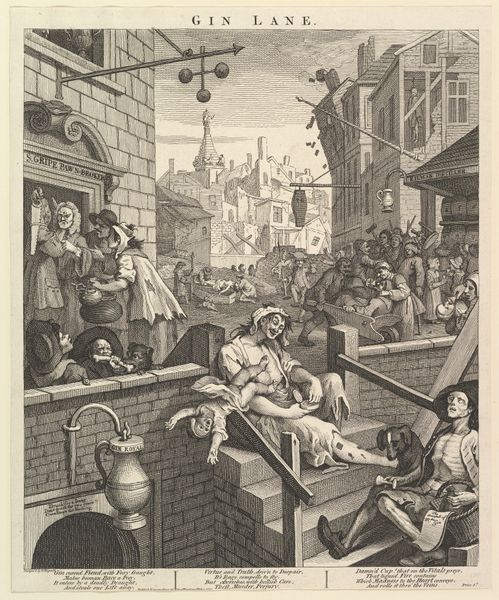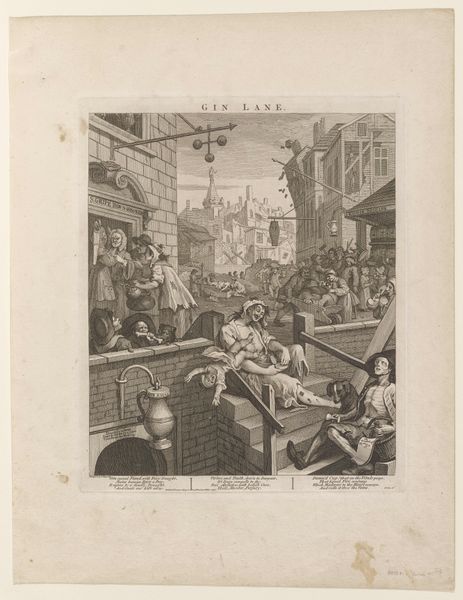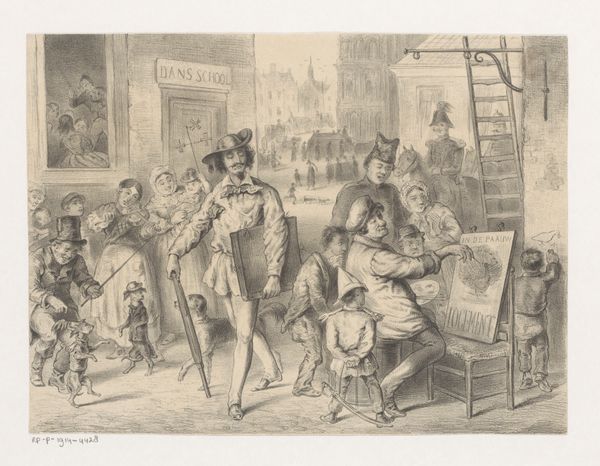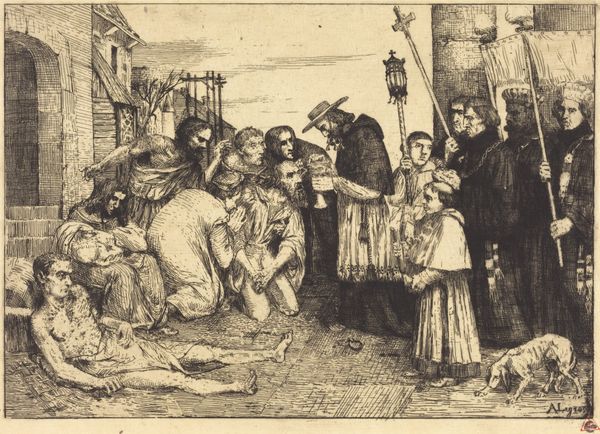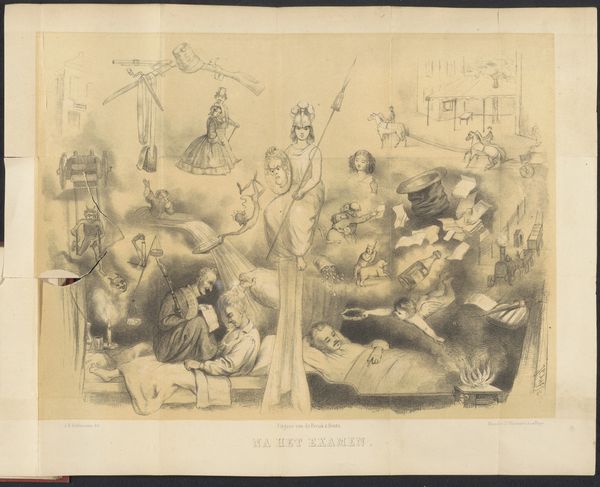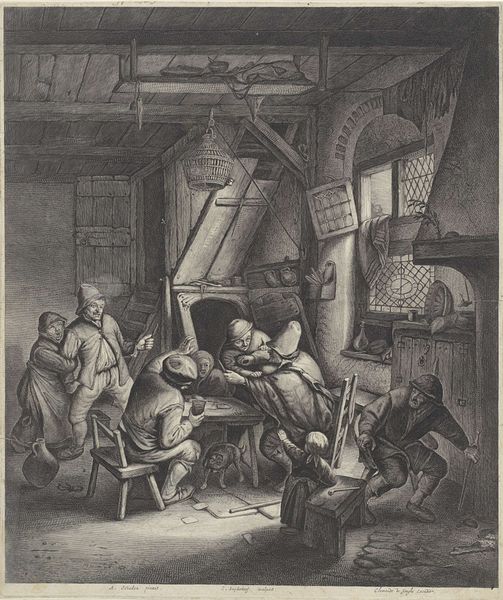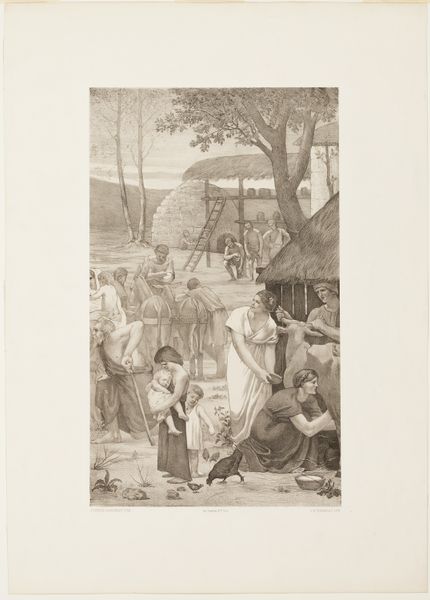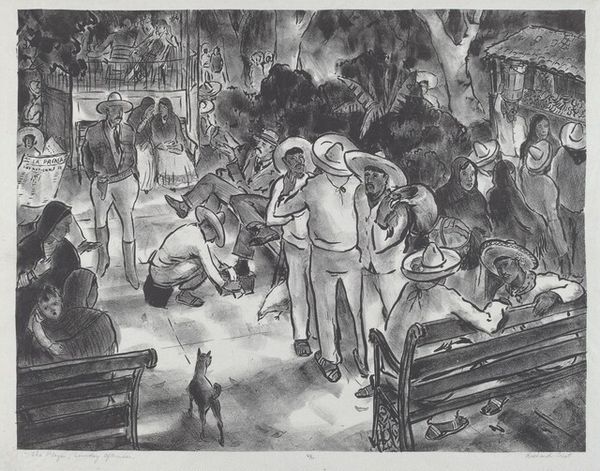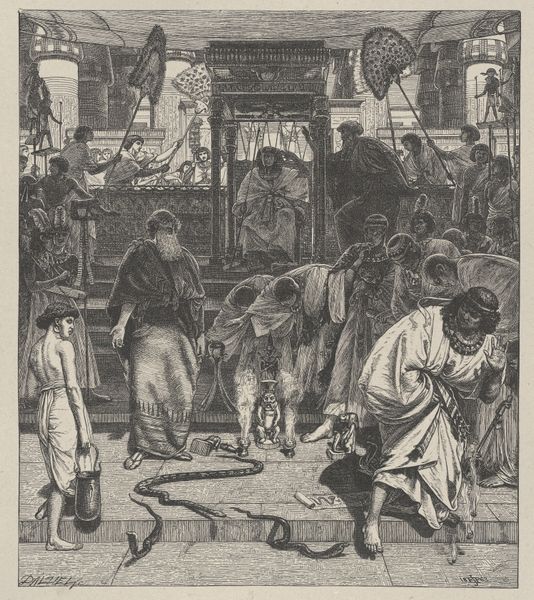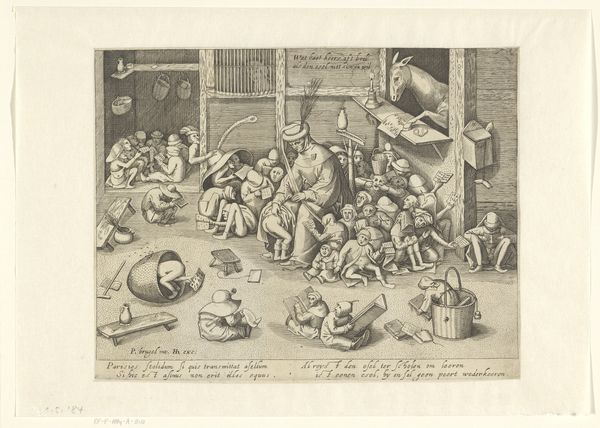
drawing, print, etching, ink
#
drawing
#
narrative-art
#
baroque
# print
#
etching
#
caricature
#
social-realism
#
ink
#
sketchwork
#
cityscape
#
genre-painting
#
history-painting
Dimensions: 15 7/16 x 12 7/8 in. (39.2 x 32.7 cm)
Copyright: Public Domain
Curator: Ah, "Gin Lane" by William Hogarth, created in 1751. A stark commentary rendered in etching and engraving, now residing at the Metropolitan Museum. What are your initial thoughts? Editor: Bleak. The density of line creates such a feeling of claustrophobia. It's visceral. Curator: Indeed. Hogarth, a master of social realism, employs caricature to convey the devastating effects of gin consumption on 18th-century London. Gin, a cheap alternative to beer, became synonymous with societal decay, and this image distills that crisis. Note the skeletal figure in the upper window—a powerful symbol of death pervading daily life. Editor: And the print medium itself is so significant. This wasn't for the elite. Etchings like this were cheap to produce, designed for mass distribution, intending to shock and, ideally, change behaviors in a society gripped by what they called 'the gin craze.' Hogarth's studio functioned like a factory, reproducing these engravings by the thousands! Curator: Precisely. The imagery throughout resonates with deeper symbolic weight. Look at the emaciated mother, oblivious as her child tumbles into the abyss. That speaks volumes. And even the setting—a crumbling cityscape—underscores moral and physical ruin. Gin isn’t merely a drink; it’s a symptom and agent of wider societal ills. Editor: Yes! It’s all so purposefully bleak and textured with the process itself enabling that commentary on consumption. This piece wouldn’t be nearly as scathing, I think, had it been done using, say, oils, meant only for a few collectors to consume. It's fascinating how form and content interlock in his prints. Curator: Well said. Hogarth hoped such explicit visual warnings might shift the tide. "Gin Lane", alongside its counterpart, "Beer Street," represents a direct plea for societal reform, tapping into deep anxieties about morality, family, and national strength. It speaks volumes of the hope he placed on the symbolic language. Editor: Seeing the materiality of the print reminds us how crucial distribution and accessibility are for affecting genuine change. You need not just potent imagery, but also a way to spread your message. It underscores the social agency of art. Curator: Indeed. A somber piece, undeniably, but crucial for grasping the historical and cultural currents that shaped the 18th century. Editor: Absolutely. Hogarth’s work leaves you considering both its sharp artistic skill and the urgent social challenge he tried to address.
Comments
No comments
Be the first to comment and join the conversation on the ultimate creative platform.
